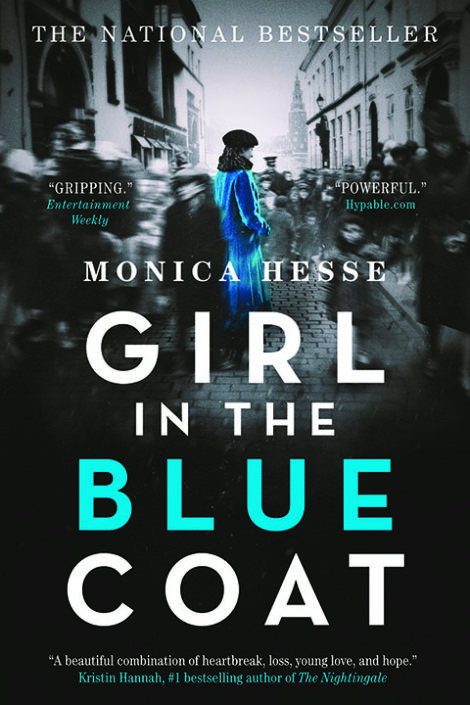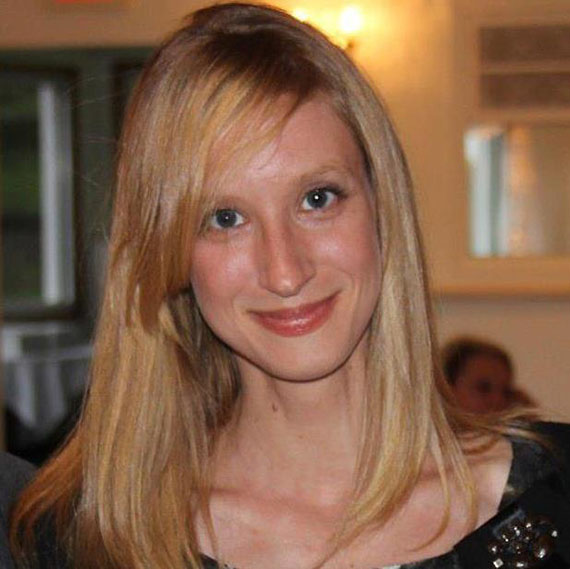
GIRL IN THE BLUE COAT
This unforgettable story of bravery, grief, and love in impossible times is a national bestseller, an Edgar Award nominee, an Indie Next pick, and an Entertainment Weekly best YA book of the year.
Hanneke is a “finder” in Nazi-occupied Amsterdam, delivering sought-after black market goods to paying customers. She spends her days grieving the devastating loss of her boyfriend, who was among thousands of Dutch soldiers killed as the Germans invaded, and keeping her family afloat with her illegal work.
On a routine delivery, a client asks Hanneke for help. Expecting to hear that Mrs.
This unforgettable story of bravery, grief, and love in impossible times is a national bestseller, an Edgar Award nominee, an Indie Next pick, and an Entertainment Weekly best YA book of the year.
Hanneke is a “finder” in Nazi-occupied Amsterdam, delivering sought-after black market goods to paying customers. She spends her days grieving the devastating loss of her boyfriend, who was among thousands of Dutch soldiers killed as the Germans invaded, and keeping her family afloat with her illegal work.
On a routine delivery, a client asks Hanneke for help. Expecting to hear that Mrs. Janssen wants cheese or kerosene, Hanneke is shocked by the older woman’s frantic plea to find a person—a Jewish teenager Mrs. Janssen had been hiding who has vanished without a trace from a secret room. Hanneke initially wants nothing to do with such dangerous work, but is ultimately drawn into a web of mysteries and stunning revelations that lead her into the heart of a resistance group, open her eyes to the horrors of the Nazi war machine, and force her to take desperate action.
- Little, Brown
- Paperback
- April 2017
- 320 Pages
- 9780316260633
About Monica Hesse
 Monica Hesse is an author and journalist with The Washington Post. She lives in Washington, D.C. with her husband and their dog.
Monica Hesse is an author and journalist with The Washington Post. She lives in Washington, D.C. with her husband and their dog.
Praise
National Bestseller
Edgar Award Nominee
Indie Next Pick
Entertainment Weekly Best YA Book of the Year
Booklist Best Young Adult Book
New York Public Library Best Book for Teens
“A poignant, wonderfully crafted story of love and loss, courage and redemption.”—Shelf Awareness (starred review)
“A riveting read from start to finish that you won’t want to put down.”—Hypable.com
“A gripping historical mystery.”—Publishers Weekly (starred review)
Discussion Questions
1. Hanneke begins her story by recounting an argument she had with Bas about whose fault it was that he’d fallen in love with her. How does this anecdote tie into the novel’s larger theme of fault and responsibility? At the end of the novel, does Hanneke still think about fault in the same way?
2. Although numerous large, powerful nations clashed during World War II, Girl in the Blue Coat takes place in the Netherlands, a comparatively small, German-occupied country. Why might Monica Hesse have chosen Amsterdam as a setting when other places were more directly involved in the conflict?
3. Hanneke spends most of the novel slowly unraveling the mystery of Mirjam’s disappearance. However, just before she achieves her goal, a girl she believes is Mirjam is shot in front of her. Were you surprised by this abrupt, violent climax? How does it reframe Hanneke’s journey?
4. At first, Hanneke is opposed to resisting the German occupation directly. She deals in the black market for the benefit of her family and no one else. Various other characters hold a similar viewpoint—they loathe the Nazi occupation but do not fight back outright. How do you feel about the people who acted this way? Did Girl in the Blue Coat humanize them, or were their actions immoral?
5. At the end of the novel, Hanneke finds the real Mirjam and informs Mirjam of her friend Amalia’s death. Why do you think she chose to do so? Do you think she made the right decision?
6. Hesse ends Girl in the Blue Coat with an anecdote about Bas changing the last line in a book Hanneke is reading. What do you think is the symbolism of this scene? Why might Hesse have decided to end Hanneke’s story this way?
